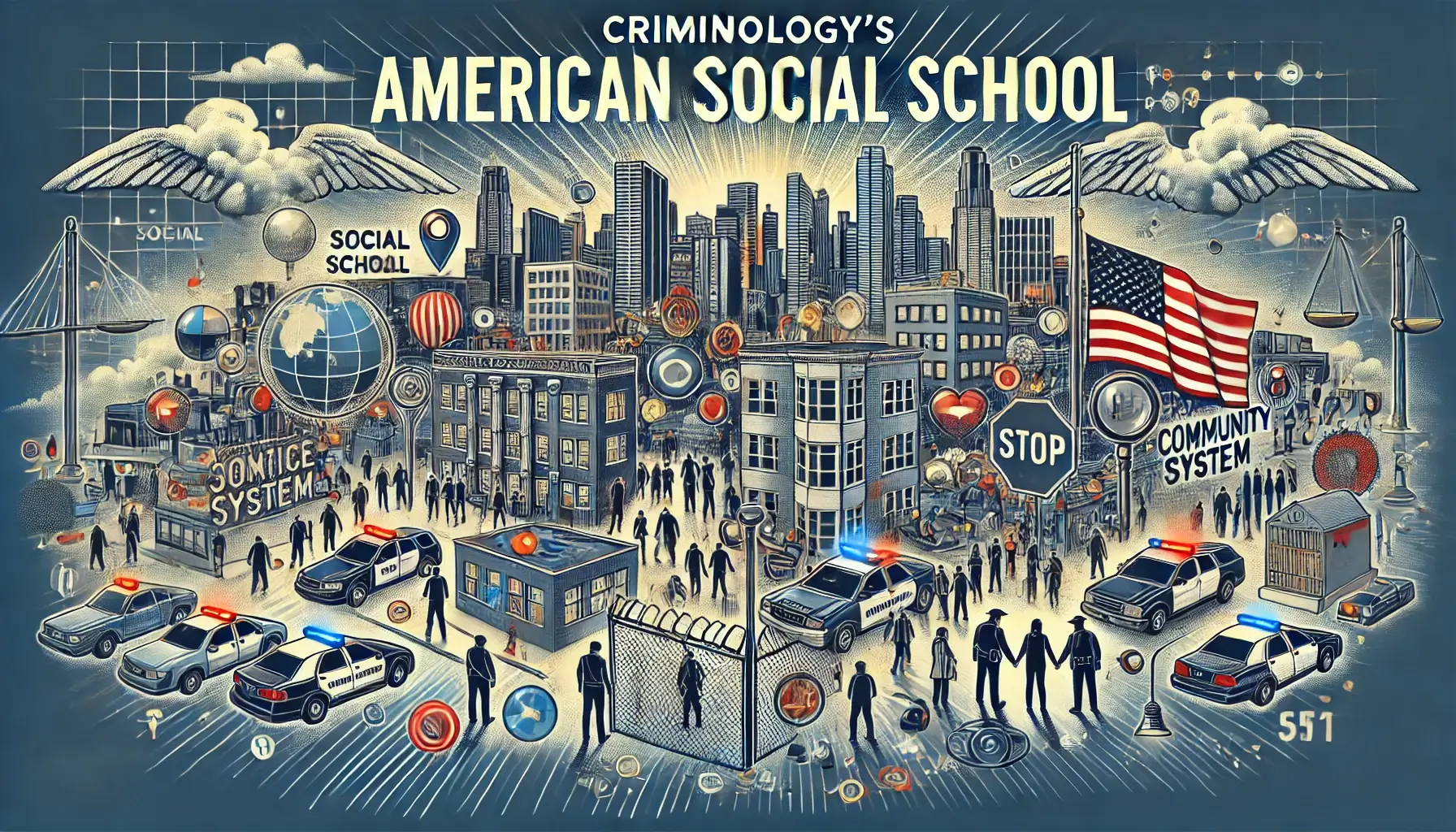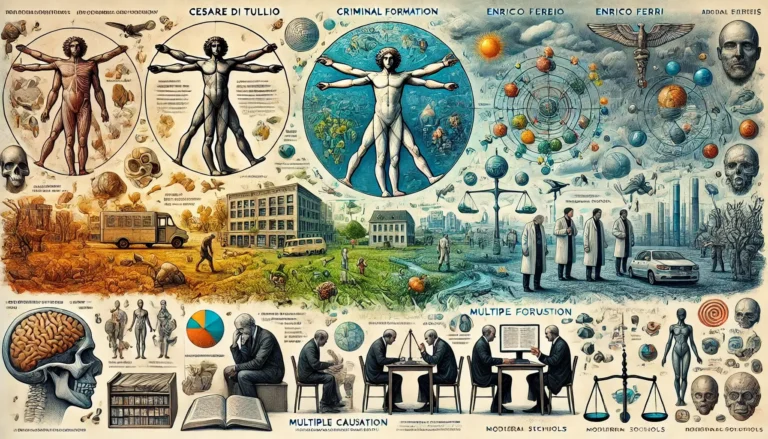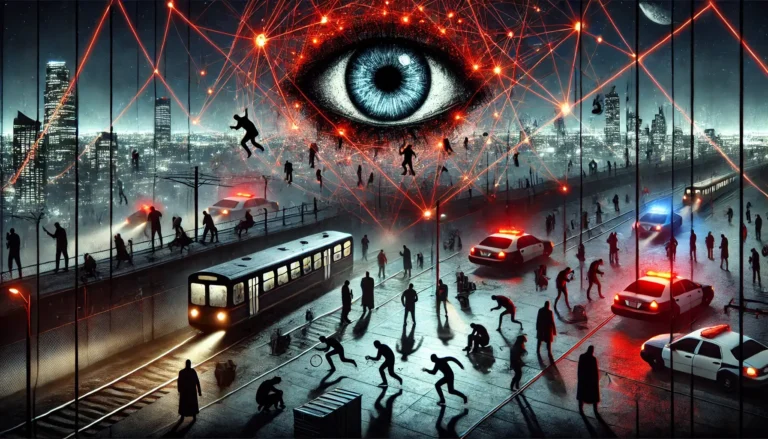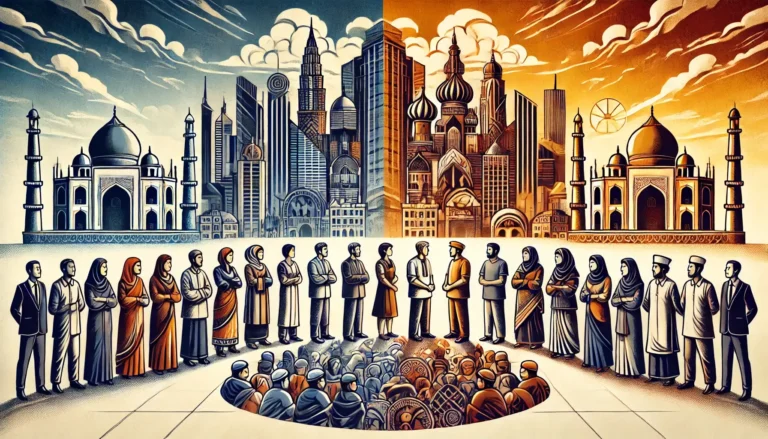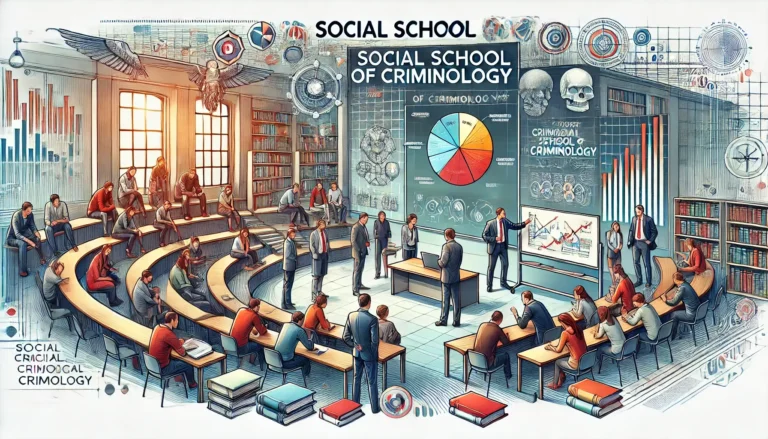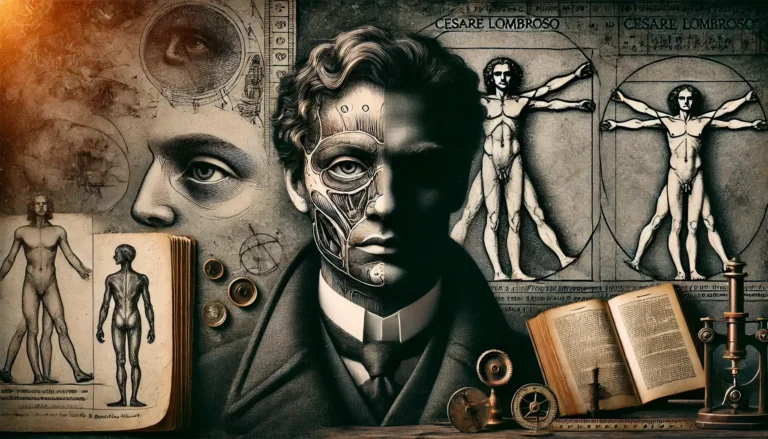Crime and Society: The American Social School
The American Social School in criminology represents a significant paradigm shift from biological and psychological explanations of criminal behavior to a more sociologically driven understanding. This school of thought emphasizes the role of social structures, economic conditions, and environmental factors in shaping criminal behavior. Unlike earlier theories that attributed crime to individual pathology, the American Social School explores how society itself influences deviant behavior.
This article delves into the origins, key theories, and major contributors of the American Social School, along with its impact on modern criminology and policy-making.
Origins and Theoretical Foundations
The American Social School emerged in the early 20th century as an intellectual response to the limitations of biological determinism and psychological explanations of crime. It was heavily influenced by sociological theories that examined crime through the lens of social structures, cultural dynamics, and economic disparities.
A crucial element of this school was the belief that crime is not simply an individual choice or an inherent trait but a product of the environment in which individuals are raised. This perspective aligns with broader sociological movements that emphasize socialization, peer influence, and structural inequalities as primary factors in criminal behavior.
Key Theories of the American Social School
Several theories define the American Social School, each contributing uniquely to our understanding of crime and deviance.
1. Social Disorganization Theory
One of the foundational theories within the American Social School is the Social Disorganization Theory, developed by Clifford Shaw and Henry McKay in the early 20th century. This theory posits that crime is more prevalent in communities experiencing economic deprivation, high mobility, and weak social institutions.
- Main Arguments:
- Crime rates are influenced by neighborhood structures.
- Areas with high poverty and instability foster criminal behavior.
- Weak community bonds result in poor social control.
Shaw and McKay conducted empirical studies in Chicago, demonstrating that crime was concentrated in specific urban areas rather than being evenly distributed.
2. Strain Theory
Robert Merton’s Strain Theory builds on the American Social School’s foundation by explaining how societal pressure can drive individuals toward crime. Merton argued that when individuals are unable to achieve socially accepted goals (such as financial success) through legitimate means, they may resort to deviant behavior.
- Main Arguments:
- Society sets cultural goals (e.g., success, wealth) but does not provide equal means to achieve them.
- Individuals experiencing strain adapt in different ways, some resorting to crime.
- Economic inequality plays a major role in criminality.
Strain Theory remains influential in explaining economic-related crimes, gang culture, and social inequality’s impact on criminal behavior.
3. Differential Association Theory
Developed by Edwin Sutherland, Differential Association Theory argues that criminal behavior is learned through social interactions. Sutherland suggested that individuals become criminals not because of inherent traits but because they are exposed to criminal values and behaviors from peers.
- Main Arguments:
- Criminal behavior is learned, not inherited.
- Individuals exposed to more pro-criminal influences than anti-criminal influences are likely to engage in crime.
- Social interactions shape an individual’s attitude toward the law.
This theory laid the groundwork for later research on peer influence, gang activity, and recidivism.
4. Labeling Theory
Howard Becker and other scholars expanded on the American Social School’s ideas by introducing Labeling Theory. This theory suggests that crime and deviance are not inherent behaviors but are socially constructed through labels imposed by society.
- Main Arguments:
- People labeled as criminals may internalize these identities and continue engaging in crime.
- The criminal justice system and media play a role in shaping deviant identities.
- Social reactions contribute to secondary deviance, where labeled individuals engage in more crime due to societal rejection.
This perspective influenced modern policies focused on reducing stigmatization and promoting rehabilitation.
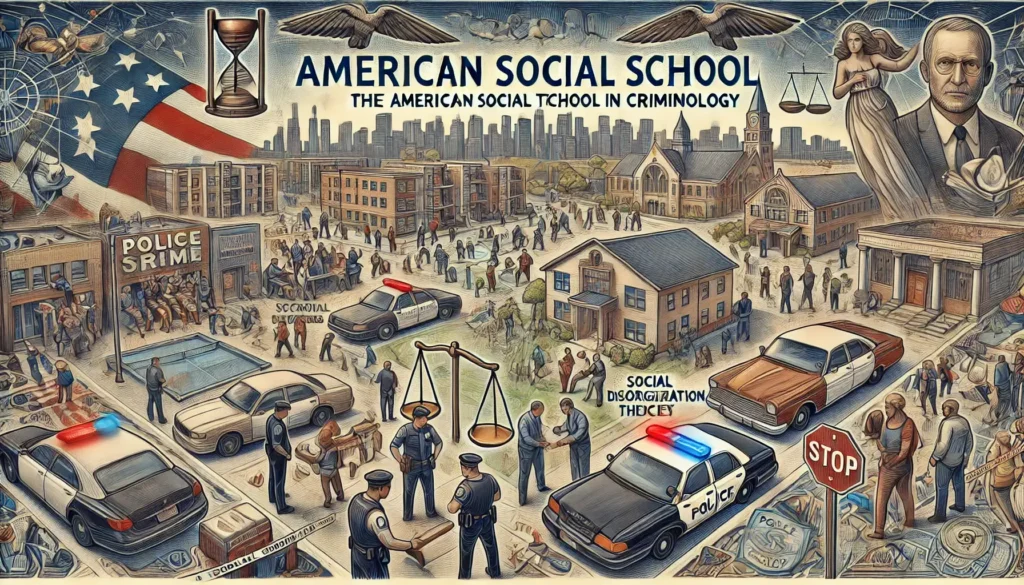
Major Contributors to the American Social School
Several criminologists shaped the American Social School, providing empirical evidence and theoretical advancements that remain influential today.
- Clifford Shaw & Henry McKay: Their work on Social Disorganization Theory remains foundational in studying crime patterns in urban areas.
- Robert Merton: Developed Strain Theory, highlighting economic disparity’s role in criminal behavior.
- Edwin Sutherland: Introduced Differential Association Theory, emphasizing the socialization of crime.
- Howard Becker: Advanced Labeling Theory, focusing on the social consequences of being labeled as a criminal.
Impact on Modern Criminology and Policy
The American Social School has significantly influenced modern criminology and criminal justice policies.
- Community Policing: Based on Social Disorganization Theory, modern policing strategies emphasize neighborhood engagement and strengthening community bonds to prevent crime.
- Juvenile Justice Reform: Differential Association and Labeling Theories contributed to the push for rehabilitation-focused juvenile justice policies rather than purely punitive measures.
- Economic and Social Policies: Strain Theory underscores the need for economic reforms and social support systems to reduce crime rates.
- Restorative Justice: Labeling Theory has encouraged the development of alternative sentencing methods, such as restorative justice, to avoid reinforcing criminal identities.
Criticisms and Limitations
Despite its profound impact, the American Social School is not without criticisms.
- Overemphasis on Environment: Critics argue that this school may neglect individual agency and psychological factors in criminal behavior.
- Lack of Universality: Social Disorganization and Strain Theories may not apply equally to all cultural and economic contexts.
- Challenges in Measuring Social Influence: Differential Association and Labeling Theories rely on subjective interpretations of social interactions and stigmatization.
Sociological Context Behind the Rise of the American Social School
The rise of the American Social School cannot be fully understood without considering the broader sociological context of the early 20th century. This era in the United States was marked by intense societal change—waves of immigration from Europe, the expansion of industrial cities, and widespread economic inequality. These rapid transformations led to social instability, cultural clashes, and weakened community ties. Sociologists began to observe patterns of deviant behavior emerging not in isolated individuals but within specific environments—especially impoverished, overcrowded urban areas. The realization that crime might stem from social breakdown rather than individual pathology opened the door to a sociologically grounded approach to criminology, which became the hallmark of the American Social School.
Influence of the Chicago School of Sociology
The Chicago School of Sociology, particularly through the work of Robert Park and Ernest Burgess, played an instrumental role in shaping the intellectual framework of the American Social School. Using cities as living laboratories, they examined how different urban zones produced distinct social problems. They developed the “Concentric Zone Model,” which proposed that crime tends to flourish in transitional zones—areas characterized by high residential turnover, poverty, and weak community institutions. This spatial understanding of crime distribution gave empirical weight to the Social Disorganization Theory. Moreover, the Chicago School encouraged methodological rigor through the use of ethnographic studies, mapping techniques, and longitudinal neighborhood research, all of which became standard practices in criminological research.
Practical Applications in Urban Planning
One of the most important legacies of the American Social School is its direct impact on urban policy and planning. Urban planners and policymakers began to recognize the link between the built environment and social behavior. In response, they implemented a variety of community-based initiatives aimed at reducing crime by improving neighborhood cohesion. These include efforts such as increasing green spaces, improving street lighting, supporting local businesses, and investing in public housing quality. Programs like “Broken Windows Policing”—while controversial—also stem from the belief that maintaining order in urban environments can deter more serious crimes. Additionally, many modern cities incorporate crime prevention through environmental design (CPTED), an approach grounded in the environmental awareness championed by the American Social School.
Educational Implications and Youth Intervention
Recognizing that social factors heavily influence criminal development, educators and social workers have developed programs to intervene early in the lives of at-risk youth. Schools in vulnerable areas often integrate social services, counseling, and extracurricular activities designed to strengthen social bonds and promote positive peer relationships. Mentorship programs—especially those involving former offenders or community leaders—aim to provide role models for young people exposed to crime. These interventions are grounded in the assumption that a supportive environment, combined with consistent social engagement, can redirect youth from potential criminal trajectories. The school thus becomes not only an educational space but a central institution in crime prevention, echoing the social control principles emphasized by the American Social School.
Integration with Contemporary Theories
In recent decades, criminologists have sought to expand the reach of the American Social School by integrating its principles with newer theories. For instance, Routine Activity Theory complements Social Disorganization Theory by exploring how everyday patterns of life can create opportunities for crime. Cultural criminology adds another dimension, examining how subcultures, media, and symbolic resistance influence deviant behavior. Critical Race Theory also contributes by highlighting how systemic inequality and racialized policing affect crime and punishment, especially in marginalized communities. This interdisciplinary fusion has allowed the American Social School to remain relevant, evolving into a dynamic framework capable of addressing 21st-century social problems.
Global Influence and Adaptation
Although initially developed to address crime in American cities, the ideas of the American Social School have found resonance worldwide. In Latin American countries like Brazil, the correlation between poverty, informal housing (favelas), and gang violence mirrors the conditions identified by Shaw and McKay. In post-apartheid South Africa, sociologists use Disorganization Theory to analyze the lingering effects of segregation on crime rates. The United Kingdom has incorporated elements of Labeling Theory into youth justice reforms, particularly in efforts to reduce recidivism among first-time offenders. These international applications demonstrate that while the American Social School is rooted in specific historical and geographical contexts, its core concepts have universal applicability in understanding crime through a social lens.
Future Directions and Ongoing Research
Today, criminological research inspired by the American Social School is moving into digital territory. Scholars are exploring how virtual environments—such as social media platforms and online communities—create new contexts for deviant behavior. Cyberbullying, online radicalization, and digital fraud are being studied through the lens of social interaction and structural influences, echoing the foundational ideas of Sutherland and Becker. Additionally, big data and machine learning are being used to map crime patterns and assess the effectiveness of community interventions. These innovations signal that the American Social School is not static; rather, it continues to evolve and adapt, offering vital tools for understanding crime in an increasingly complex and interconnected world.
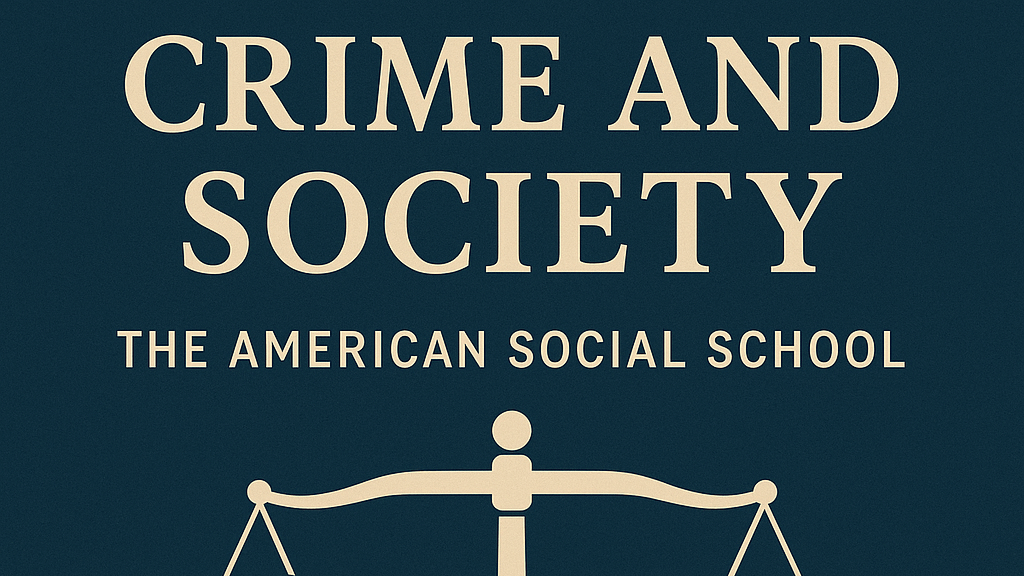
Conclusion
The American Social School remains a cornerstone of criminology, shifting the focus from individual pathology to social and structural determinants of crime. Through theories like Social Disorganization, Strain, Differential Association, and Labeling, this school has profoundly influenced criminal justice policies, law enforcement strategies, and societal attitudes toward crime.
As criminology evolves, the principles of the American Social School continue to shape discussions on criminal behavior, offering insights into how societies can prevent crime by addressing its root causes. By integrating these theories with contemporary research, policymakers and criminologists can develop more effective and humane crime prevention strategies.

